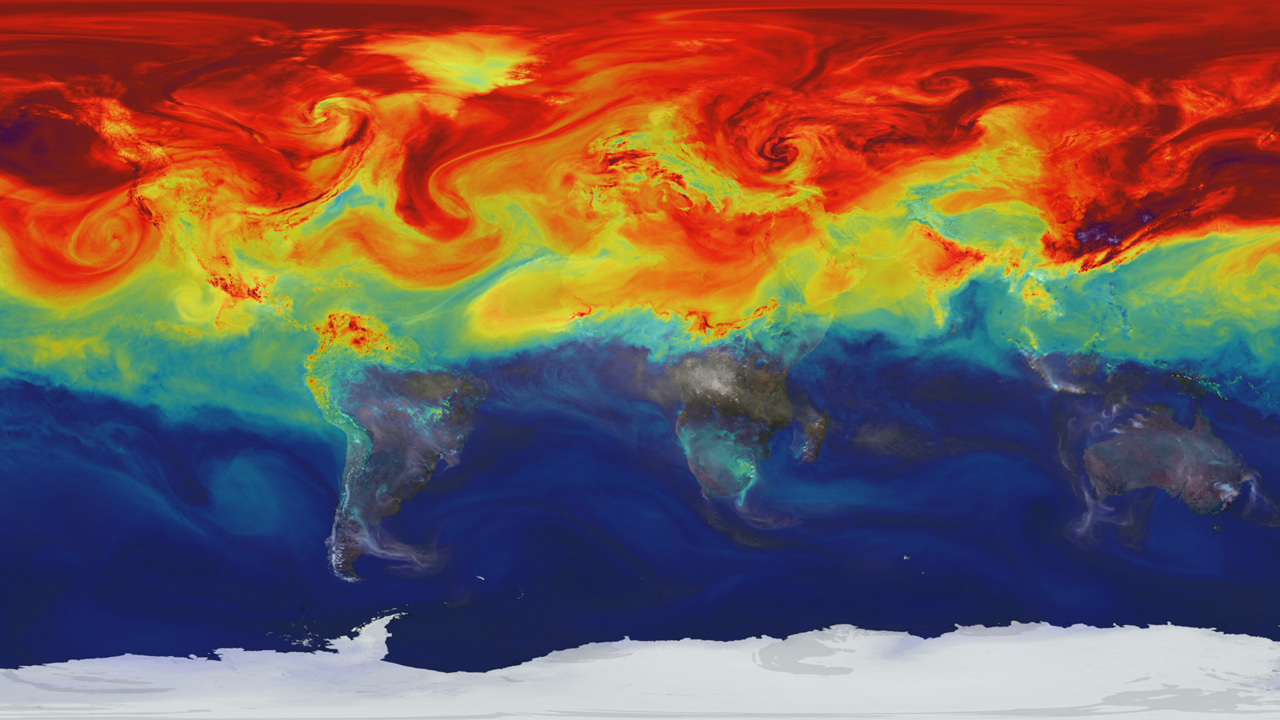Pandemic lockdowns reduced greenhouse gas levels in some areas, satellite views show
Satellites can reliably detect fluctuations in greenhouse gas concentrations in the atmosphere, according to a new study.

Satellite data shows small but highly specific decreases in atmospheric carbon dioxide due to pandemic-related lockdowns, a new study shows.
While climate scientists warn the temporary lockdowns were not nearly enough to make a dent in the growing threat of global climate change, satellite tech did show drops of 0.14 to 0.62 parts per million in specific zones between February and May 2020. (Most jurisdictions entered some form of lockdown that March.)
The measurements were a welcome sign to scientists that satellites are up to the task of monitoring atmospheric carbon dioxide levels, which are notoriously difficult to measure. Since carbon dioxide is a key greenhouse gas, though, monitoring its levels in the atmosphere accurately will be key to adjusting our response to global warming, study authors say.
Related: Dropped emissions during COVID-19 lockdown will do 'nothing' for climate change
"Current space-based technologies are approaching levels of accuracy and precision needed to support international climate mitigation strategies, signaling progress toward a long-sought goal," the team said in a statement released on Wednesday (Nov. 3).
"Atmospheric carbon dioxide is difficult to monitor because it forms a major, well-mixed and globally distributed component of the atmosphere," the statement continued. "In contrast, nitrogen dioxide, for example, appears in distinct, concentrated plumes directly above emissions sources."
The team developed a new model using data from the NASA Goddard Space Flight Center's Earth Observing System (GEOS). This is an agency Earth science model that monitors levels of global atmospheric carbon dioxide every three hours, using "statistically processed data" from the Orbiting Carbon Observatory-2 (OCO-2) satellite that launched in 2014.
Breaking space news, the latest updates on rocket launches, skywatching events and more!
At launch time, OCO-2 was advertised as being able to measure carbon dioxide levels in the atmosphere up to 24 times a second, which would allow scientists to see where the gas originated and where it is removed from the air (more officially known as "sources" and "sinks.")
The study team paid tribute to the help of OCO-2 in helping to develop their model. "This strategy has improved coverage, accuracy, and precision over existing techniques, accounts for year-to-year carbon dioxide variability that results from shifts in atmospheric circulation, and produces regular updates in near real time," the team said in their statement.
A paper based on the research was published in Science Advances, led by Brad Weir, a research scientist at NASA Goddard Space Flight Center and Universities Space Research Association.
The research was released during the United Nations Climate Change Conference (COP26) in Glasgow, which ends Nov. 12. During the conference Tuesday (Nov. 2), Europe pledged to build a new satellite constellation to track human-made greenhouse gas emissions, including carbon dioxide.
Follow Elizabeth Howell on Twitter @howellspace. Follow us on Twitter @Spacedotcom and on Facebook.

Elizabeth Howell (she/her), Ph.D., was a staff writer in the spaceflight channel between 2022 and 2024 specializing in Canadian space news. She was contributing writer for Space.com for 10 years from 2012 to 2024. Elizabeth's reporting includes multiple exclusives with the White House, leading world coverage about a lost-and-found space tomato on the International Space Station, witnessing five human spaceflight launches on two continents, flying parabolic, working inside a spacesuit, and participating in a simulated Mars mission. Her latest book, "Why Am I Taller?" (ECW Press, 2022) is co-written with astronaut Dave Williams.
